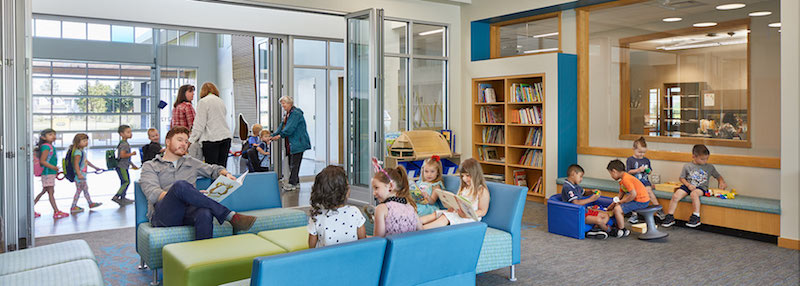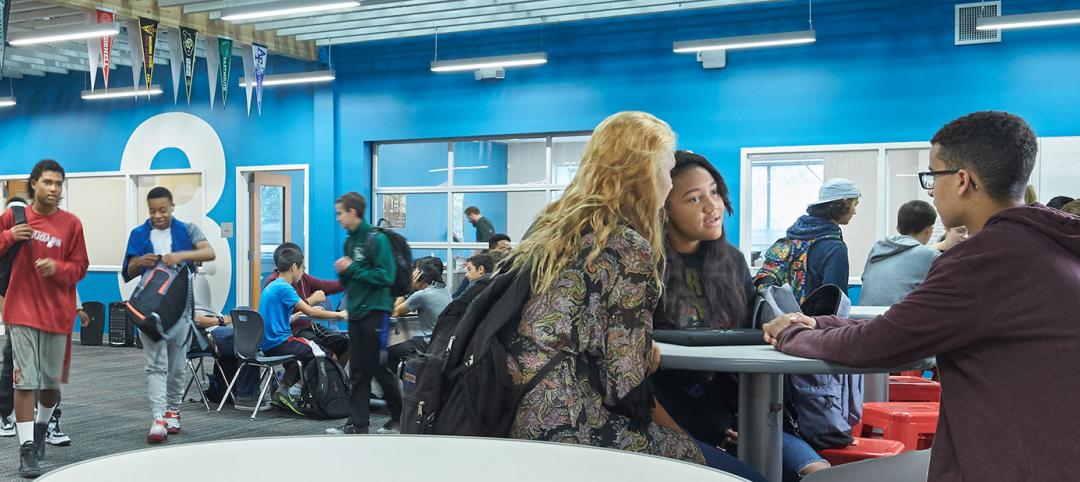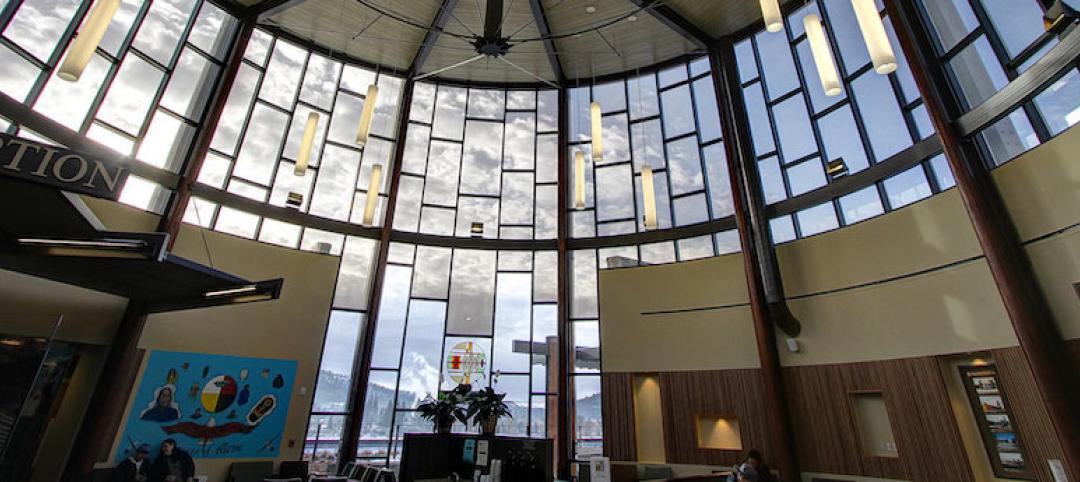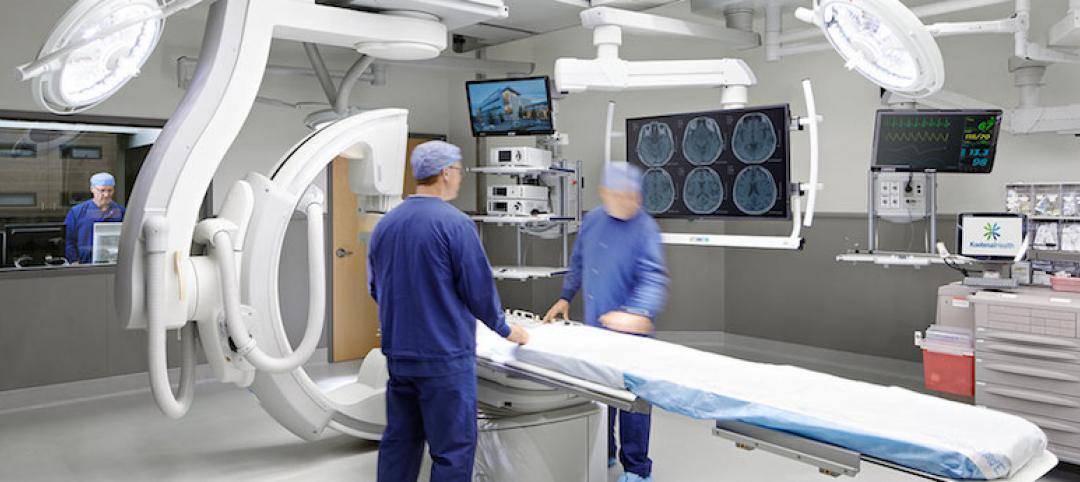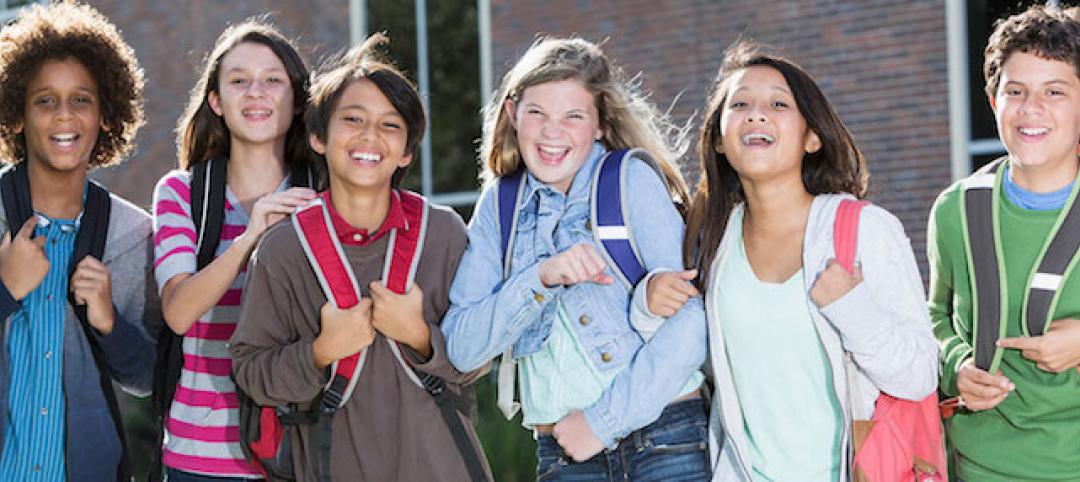On February 14 of this year, we, like most, were shocked to witness the aftermath of another school shooting in Parkland, Florida. Immediately, pundits, politicians, and parents came together in demanding change. There was little unity, however, in the definition of change.
Statistically, the likelihood of experiencing an act of violence on a school campus is low. Even in the wake of a series of school shootings, campuses are still relatively safe. The shooting in Parkland, and perhaps the perseverance of the students to have their voices heard, has focused attention on the issue of school violence and put pressure on those in power to act. As architects who design for the K-12 world, we have a responsibility to respond. We must get educated on this issue, and how to design schools to keep our future generations safe. It’s a new world.
 Following the Parkland shooting, students from Marjory Stoneman Douglas High School have become young activists, organizing protests and demanding action on school safety and gun reform. Photo courtesy of Rhona Wise/Getty Images.
Following the Parkland shooting, students from Marjory Stoneman Douglas High School have become young activists, organizing protests and demanding action on school safety and gun reform. Photo courtesy of Rhona Wise/Getty Images.
Gaining Perspective
Exactly one month after the Parkland shootings, NAC Principal Michael Pinto was asked to serve on a Blue Ribbon Panel being assembled by Los Angeles City Attorney Mike Feuer. The panel conducted a series of public hearings to garner testimony on the subject of school safety from a number of different perspectives. Topics included school police practices, mental health services, bullying, safe routes to school, and gun storage. Michael delivered testimony on school design, and approached it with the intent to educate people about education.
">
The Requirements of 21st Century Learning Environments
In order to effectively talk about school design, we need to start by understanding what a school is designed to do. Its primary function is to create a space where education can happen. And of course we want those spaces to be safe, but safety should not interfere with the primary goal of educational delivery.
We each remember how education was delivered when we were in school. Depending on when and where one was educated, it is entirely possible that today’s 21st century learning looks nothing like our own experience. Educational research is a fast-evolving field; we know more today about how children learn than ever before. Today’s educational delivery relies on the so-called Four C’s: collaboration, critical thinking, communication, and creativity. When designing environments to support these goals, we see an emphasis on transparency and flexibility, more breakout spaces for small-group learning, and increased use of informal gathering areas. Rather than students spending the day sitting in desks and listening to lectures, there is an increased emphasis on learning with purpose: project-based learning, community engagement, and students teaching others.
There is a growing concern that security considerations may motivate school administrators to shut down the evidence-based move toward more flexible and collaborative facilities. But what if current educational strategies could also make schools safer? What if we didn't have to choose?
 Designing Wilson High School’s new Academic Building to support project-based learning and collaboration required significant levels of transparency, openness, and adaptability. This presented an opportunity to establish a series of layered security measures that secured the campus without sacrificing program needs. — NAC Architecture.
Designing Wilson High School’s new Academic Building to support project-based learning and collaboration required significant levels of transparency, openness, and adaptability. This presented an opportunity to establish a series of layered security measures that secured the campus without sacrificing program needs. — NAC Architecture.
Strategies for School Security
When we look at broad design strategies for school security, we can begin with the principles of CPTED, Crime Prevention Through Environmental Design (pronounced “sep-ted”). Basic tenets of CPTED include:
— Natural Surveillance – the ability to see out
— Natural Access Control – the ability to have thresholds or layers of access
— Territoriality – the sense of ownership of space by occupants
 Two-story glazed entry lobbies at the new Sandy Hook Elementary School provide a visual connection to the exterior courtyards. This transparency allows for greater supervision and creates a place where this visual connection can support student relationship-building. Designed by Svigals + Partners. Photo credit Robert Benson.
Two-story glazed entry lobbies at the new Sandy Hook Elementary School provide a visual connection to the exterior courtyards. This transparency allows for greater supervision and creates a place where this visual connection can support student relationship-building. Designed by Svigals + Partners. Photo credit Robert Benson.
There are a variety of ways school designers can incorporate some of these principles. Carefully placed windows and gathering spaces can promote natural surveillance. Strategic programming and designed access control can support a layered campus security system. We know that when students have an adult at school who knows them, their likelihood to engage in violent behavior goes down dramatically. Incorporating transparency throughout the school creates an environment where students and staff are highly visible to one another. This promotes personal connections, fosters a sense of community, and encourages relationship building.
Based on these CPTED tenets, additional school security resources, and the current trends in school design, below is a collection of strategies for designing learning environments that keep school safety in mind without sacrificing educational goals. Many of these strategies can be utilized by school districts, with the help of informed design and the input of school safety professionals. While none of these strategies alone can solve the safety concerns we face when creating 21st century learning environments, with thoughtful planning and outcome-based solutions, a school can be positioned to be successful if ever confronted with an unfortunate circumstance.
Transparency in classrooms. This promotes natural surveillance and can be controlled with roller shades or other window treatments during lock down procedures.
Classroom locks. A door that can be locked from the inside so staff do not have to go into the corridor to secure the classroom (commonly called a “classroom security lock” by hardware specialists).
Locking technology. Remote locking capabilities by a building automation system. The system is able to be programmed to lock and unlock on a schedule. Additionally, doors can be locked remotely for emergencies such as a lock down.
Parent centers. A resource center that encourages involvement, communication, and better engages parents which builds community.
Maintained buildings and grounds. A CPTED strategy that clean and well-maintained grounds and buildings are less likely to attract trouble.
Fences off streets. Fences are a first line of defense and can be an effective tool for controlling unwanted intrusion. Gates can be designed that allow control onto campus while allowing egress at any time.
Community spaces. Similar to parent centers, a community space can be used as a resource that encourages engagement and community involvement.
Secure entries. Also called “single-point entries,” this strategy secures all but a single entry in order to control who has access to the building. They can be controlled by manual locks or remote locking technology.
Controlled lobby access. Also referred to as “secured vestibules” and used with the secure entries strategy; a secured lobby requires someone inside the building to engage a visitor before permitting access to the building.
Fire alarms. When activated, fire alarms have been a way to create confusion and provide more potential targets for those threatening a campus. Schools should review the fire code with their local jurisdiction to see if they can minimize the number of emergency fire pulls.
Concentric rings of control. A CPTED strategy based on multiple levels of security that, when combined, create a higher degree of safety on campus. It starts with fencing at the perimeter, and includes natural surveillance, secure entries, and other strategies such as lock down. By themselves, these efforts may not prevent an incident, but taken together create multiple obstacles that ultimately increase the odds of good outcomes.
School communication systems. A PA system can be used to automate lockdowns and communicate with staff during a threat. Recent advancements include staff safety lanyards that facilitate two-way communication to signal safety concerns and strategies. Systems are also available that allow cell phones to communicate safety protocols and initiate lockdowns remotely.
Laminated glazing. Laminated safety glazing is designed to resist impact. When used in select locations near school entry points, it can serve as a way to deter an intruder allowing a school time to react to a threat and delaying action until first responders are able to deploy on site.
 At Bennett Elementary School, open collaborative areas are strategically placed at the center of each classroom cluster to regulate access to highly-populated student spaces. A controlled entry system adds an additional layer of security to the building. – NAC Architecture.
At Bennett Elementary School, open collaborative areas are strategically placed at the center of each classroom cluster to regulate access to highly-populated student spaces. A controlled entry system adds an additional layer of security to the building. – NAC Architecture.
We have toured schools that feel more like prisons; more fences, barbed wire, metal detectors, and security cameras around every corner. However, in order to achieve the learning outcomes we want to see our students achieve, schools need to feel like schools. We need to think about security that is passive and undetected. If we simply react and begin to fortify and harden schools, we may effect change to the opposite of the intention. If we create a culture of fear and an expectation of violence, the result may be the creation of a society that expects violence as the norm.
Instead, we have an opportunity to create learning environments where students know each other and know how to effectively collaborate. One where they feel connected to their educators and their peers. It is possible to design a school that has the proper tools and protocol in place to protect students against violence, but it shouldn’t be at the expense of educational goals. It should be a campus that fosters a sense of community and communication, where the possibility of violence is eradicated.
Those are the schools we want our kids to go to.
More from Author
NAC Architecture | Apr 11, 2024
The just cause in behavioral health design: Make it right
NAC Architecture shares strategies for approaching behavioral health design collaboratively and thoughtfully, rather than simply applying a set of blanket rules.
NAC Architecture | Jan 26, 2023
6 ways 'choice architecture' enhances student well-being in residence halls
The environments we build and inhabit shape our lives and the choices we make. NAC Architecture's Lauren Scranton shares six strategies for enhancing well-being in residence halls.
NAC Architecture | Aug 4, 2022
Faculty housing: A powerful recruitment tool for universities
Recruitment is a growing issue for employers located in areas with a diminishing inventory of affordable housing.
NAC Architecture | Feb 24, 2020
Design for educational equity
Can architecture not only shape lives, but contribute to a more equitable and just society for marginalized people?
NAC Architecture | Aug 22, 2019
Holistic wellness: What we can learn from Native American healthcare practices
Are there existing organizations that have already addressed some of these issues that we can study and learn from?
NAC Architecture | Dec 7, 2018
Planning and constructing a hybrid operating room: Lessons learned
A Hybrid operating room (OR) is an OR that is outfitted with advanced imaging equipment that allows surgeons, radiologists, and other providers to use real-time images for guidance and assessment while performing complex surgeries.
NAC Architecture | Nov 7, 2018
Designing environments for memory care residents
How can architecture decrease frustration, increase the feeling of self-worth, and increase the ability to re-connect?
NAC Architecture | Oct 8, 2018
One size doesn't fit all: Student housing is not a pair of socks
While the programming and design for these buildings all kept a holistic living/learning experience at the core, they also had amazingly different outcomes.
NAC Architecture | Jul 6, 2018
Building for growth: Supporting gender-specific needs in middle school design
Today, efforts toward equity in education encompass a wide spectrum of considerations including sex, gender identity, socio-economic background, and ethnicity to name a few.
NAC Architecture | May 29, 2018
Will telemedicine change the face of healthcare architecture?
Telemedicine is a broad term that covers many aspects and mediums of care, but primarily it refers to the use of video monitors to allow a virtual face to face consultation to take place.

